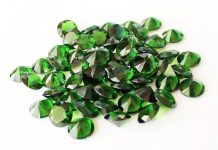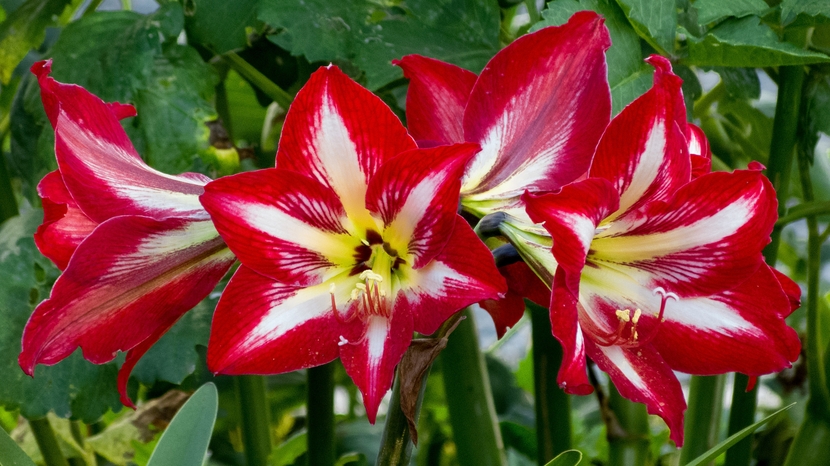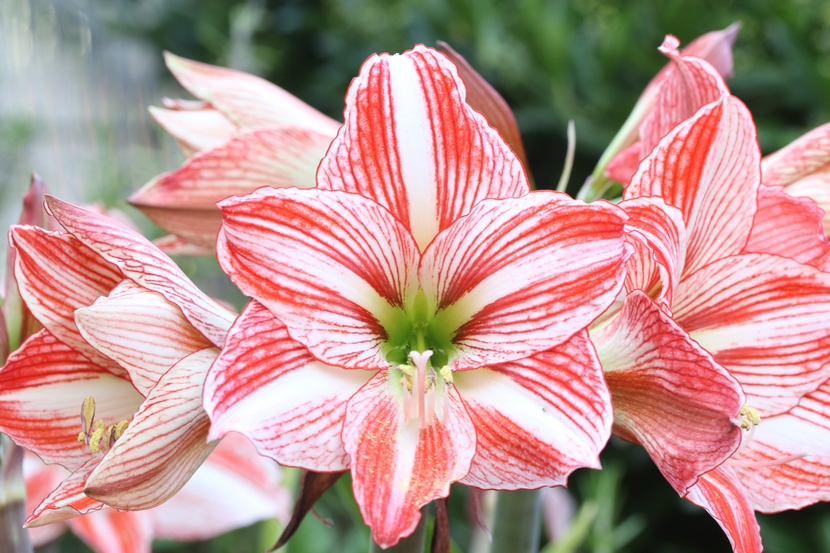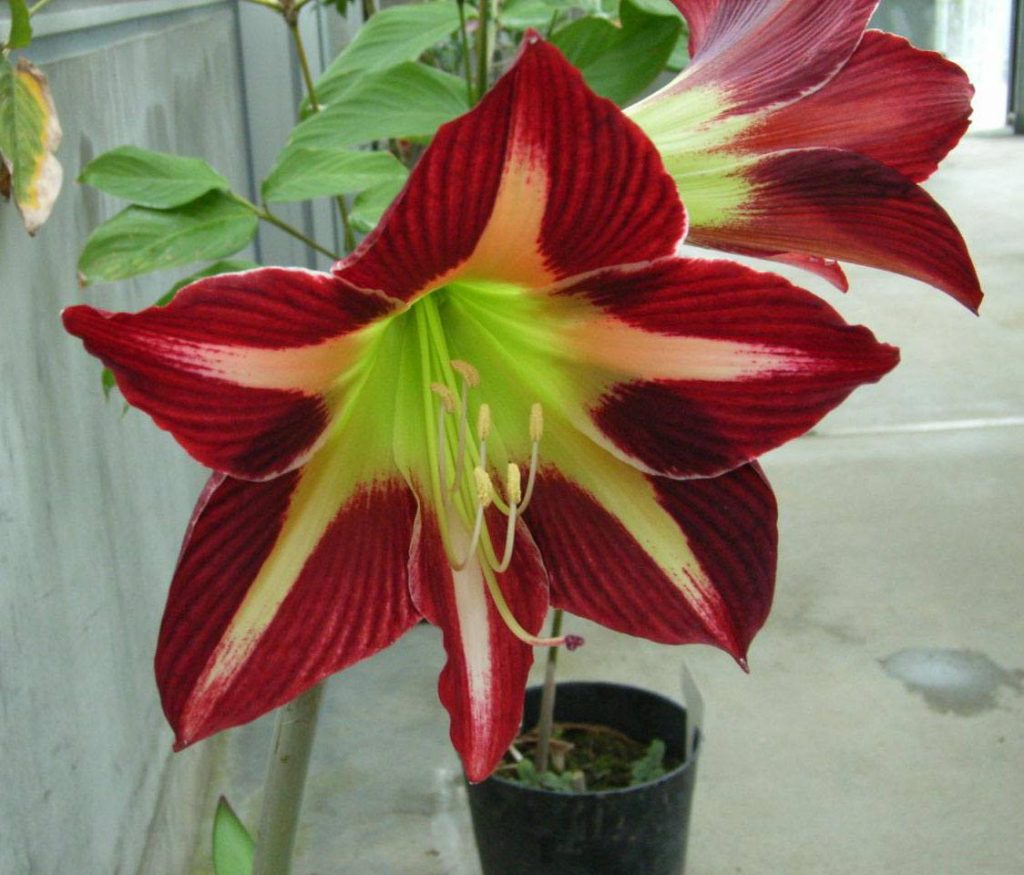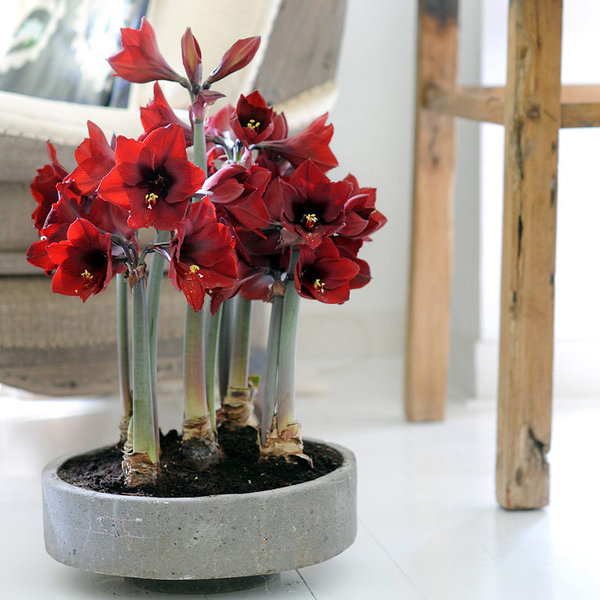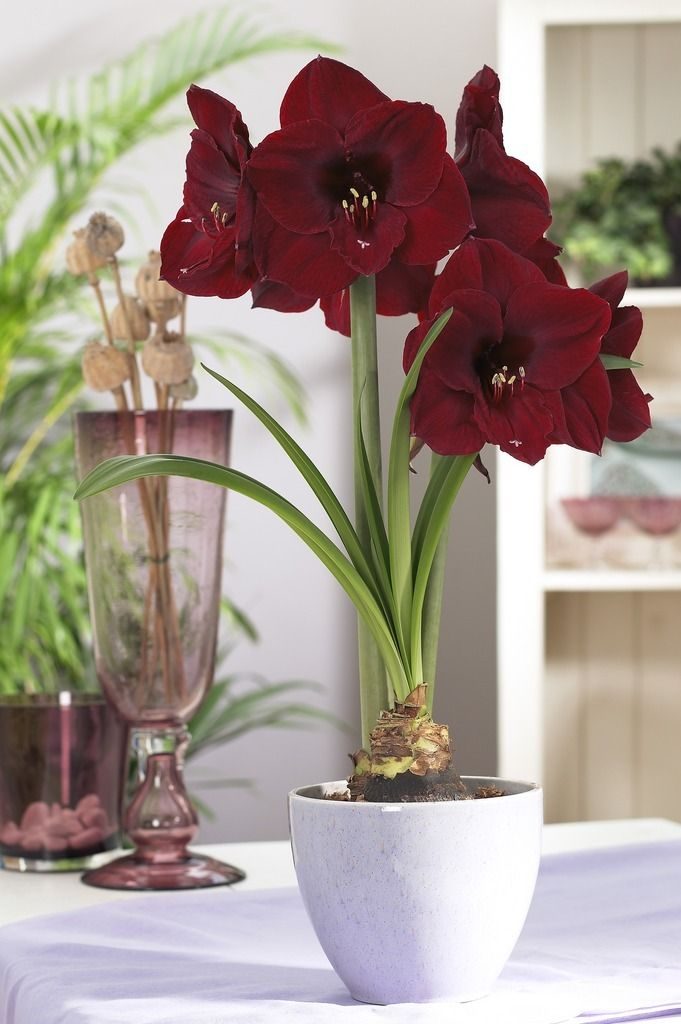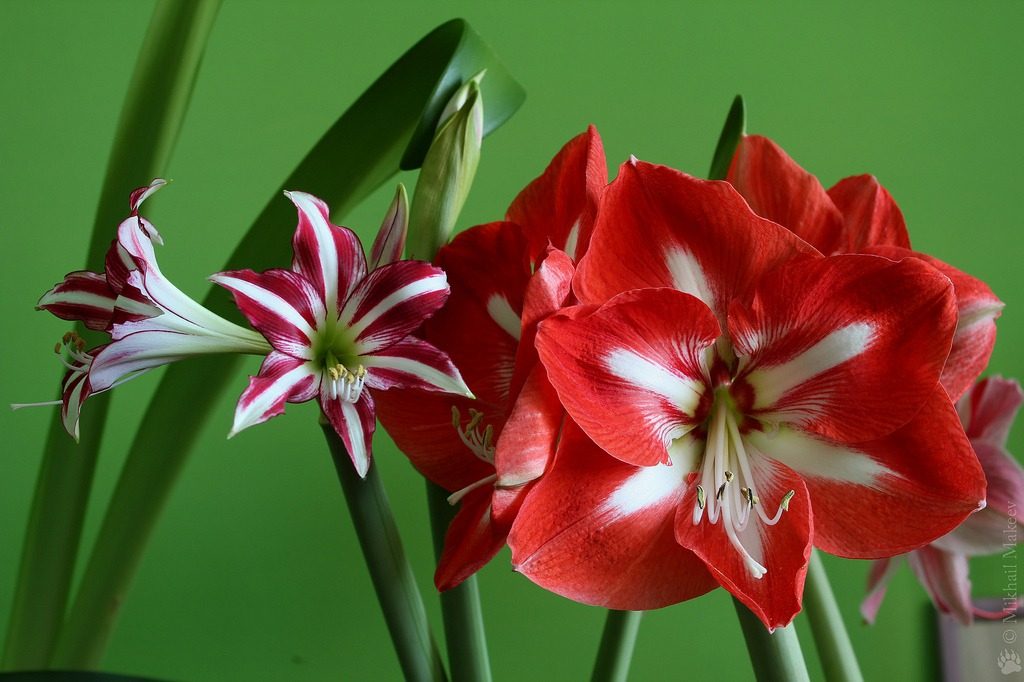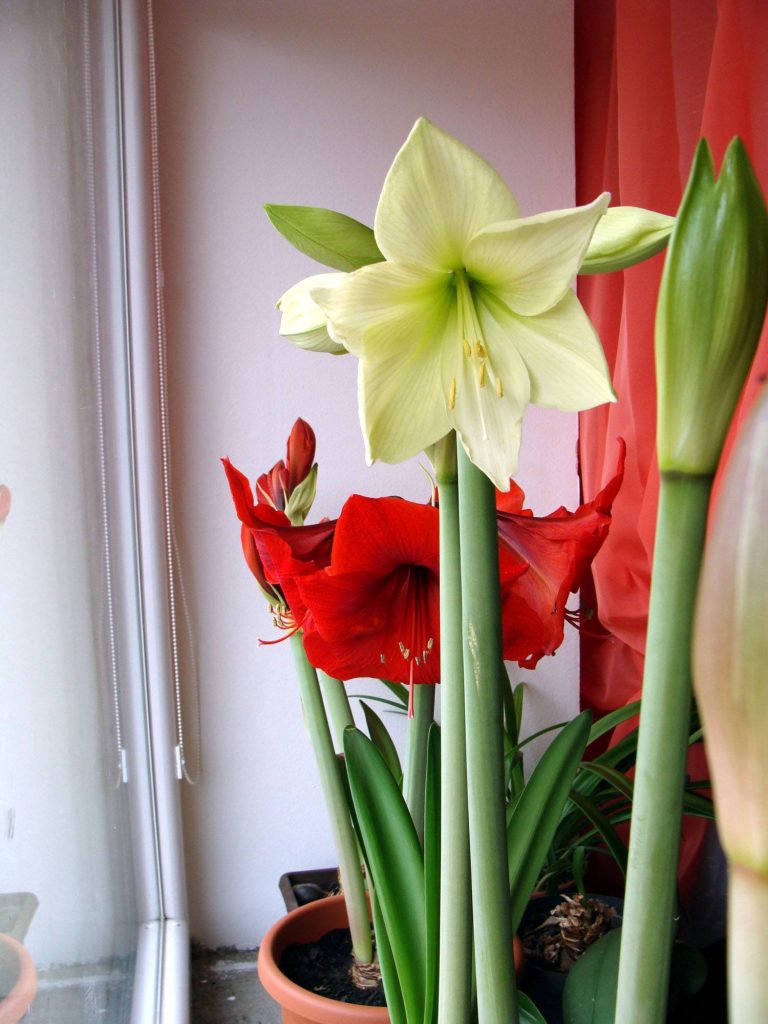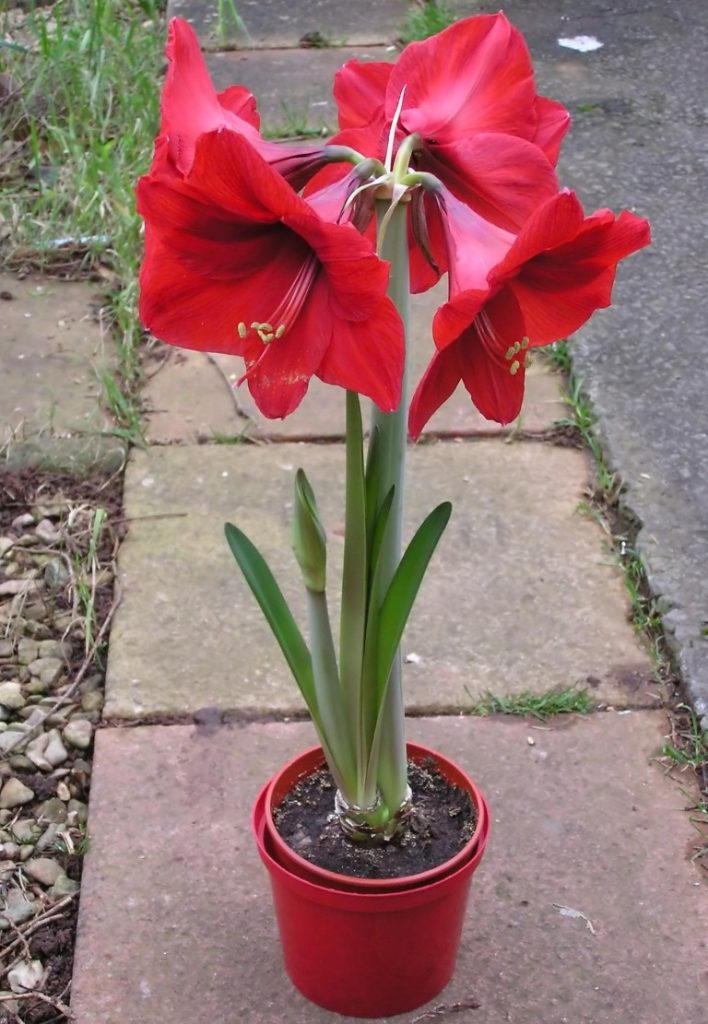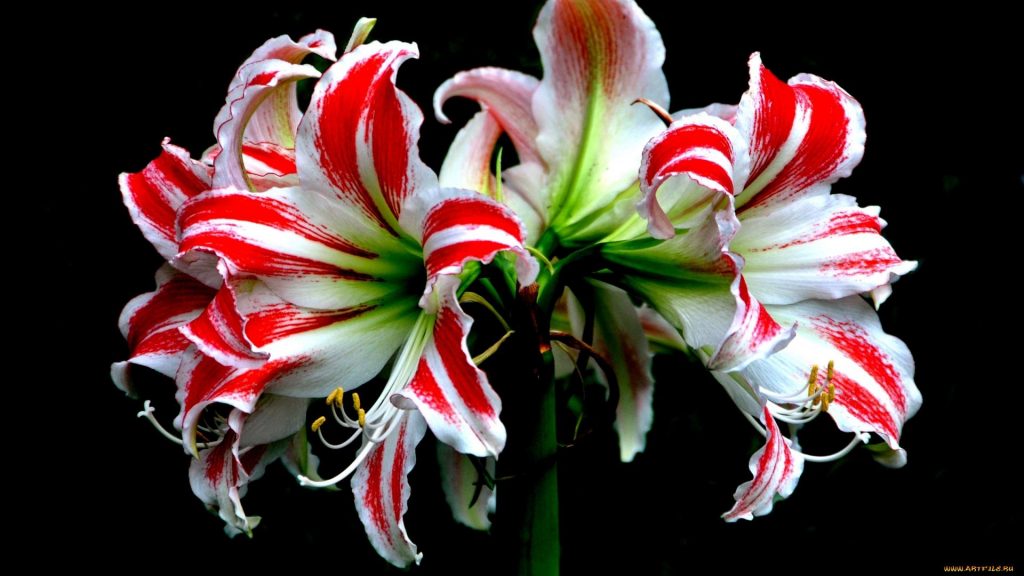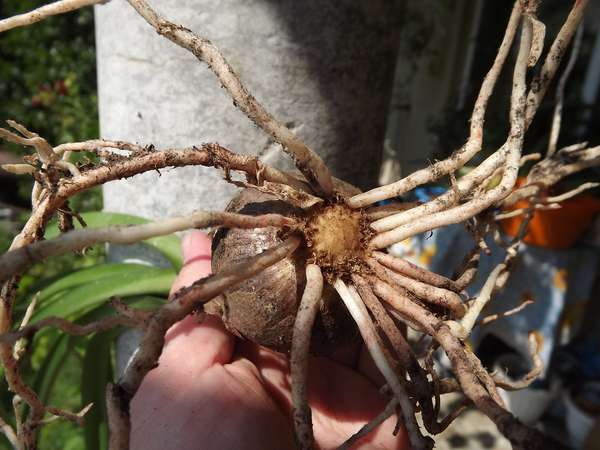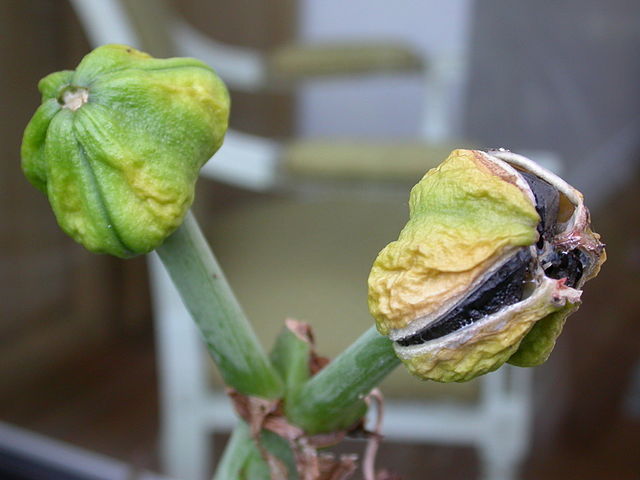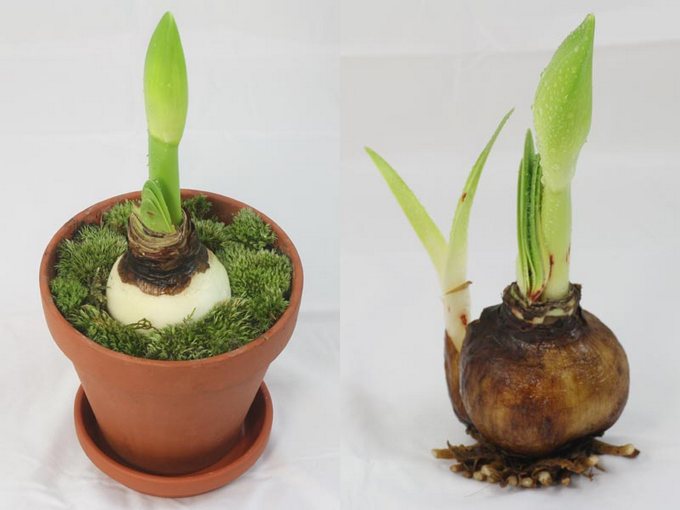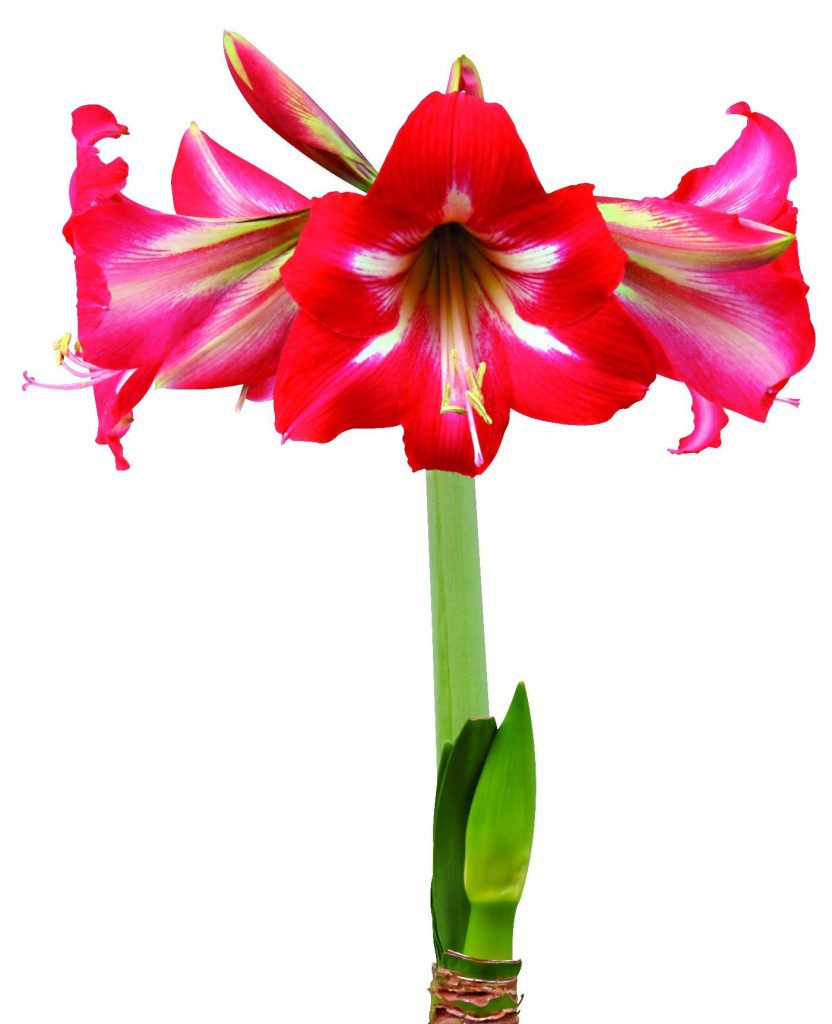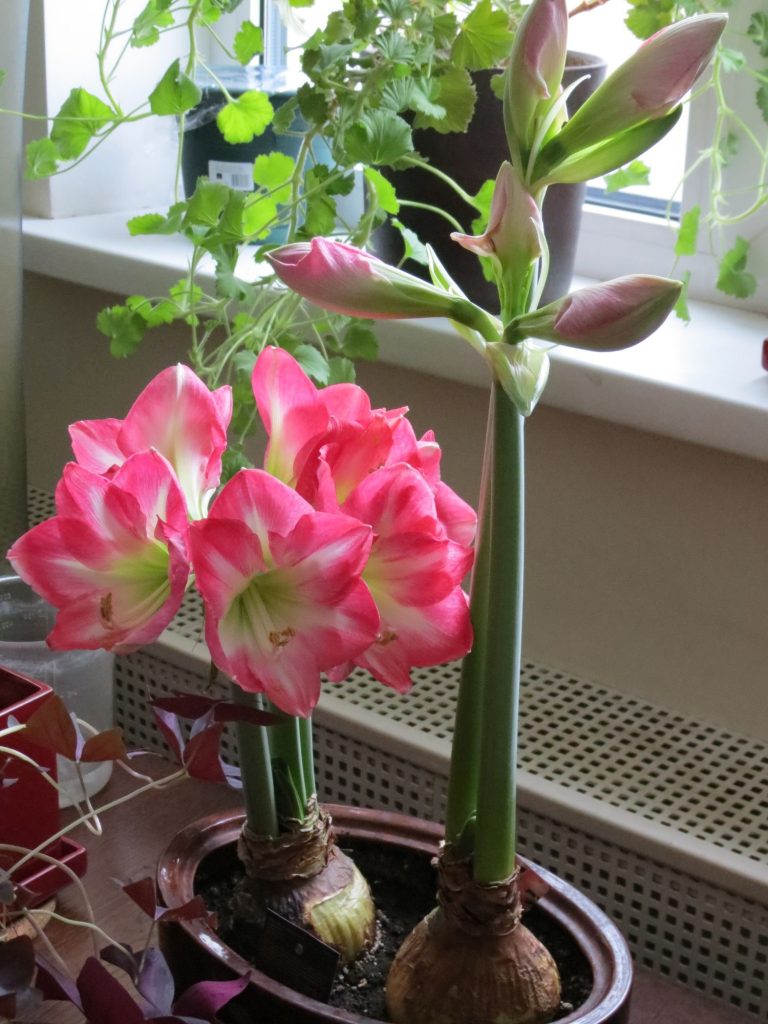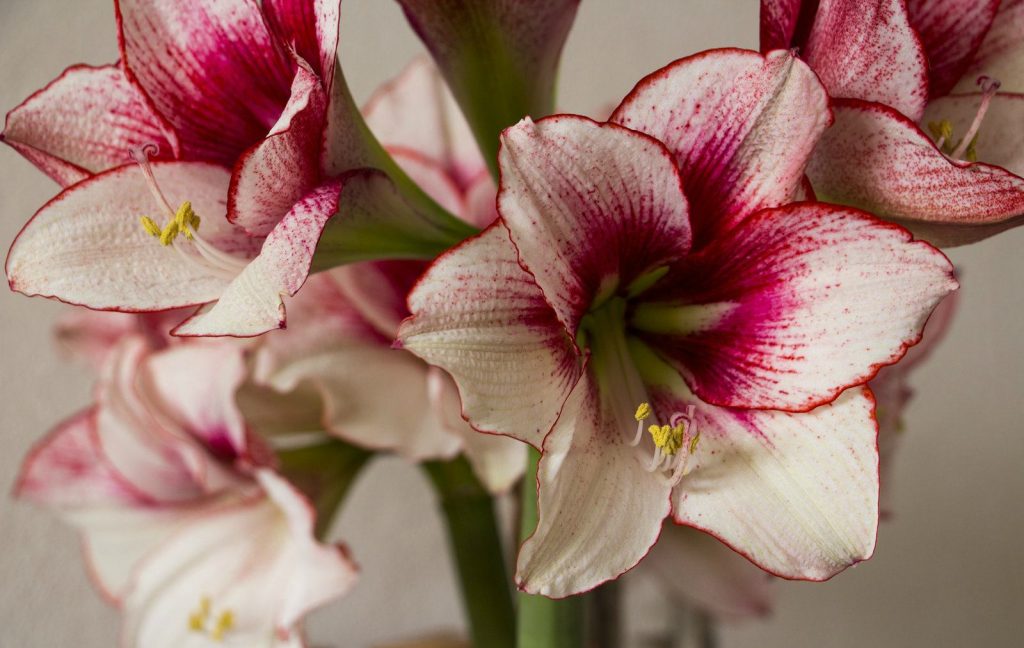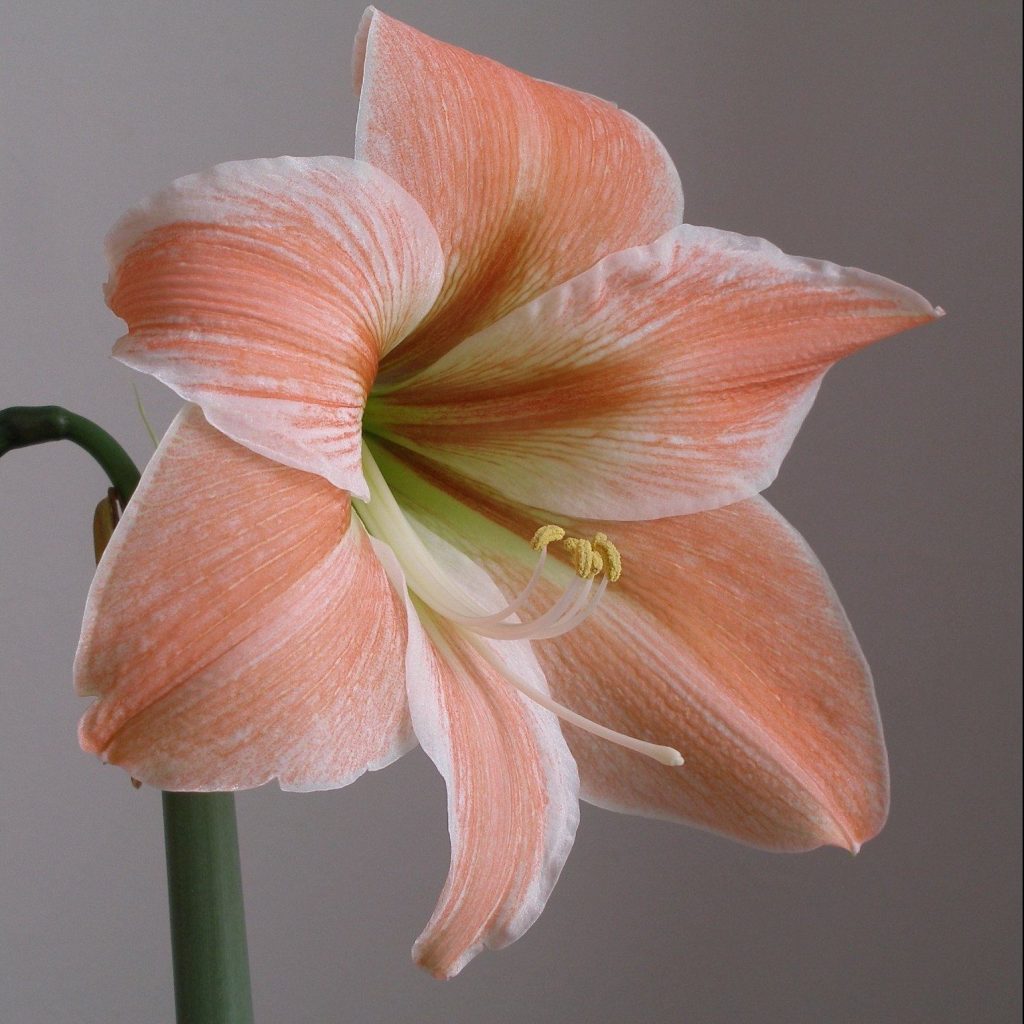Content:
Hippeastrum - plant amaryllisovogo family. It attracts many gardeners with a beautiful, tall inflorescence. How to properly care for the flower, so he gave you his beauty?
Plant Variety and Classification
Despite the fact that the experts attributed the Hippeastrum to the Amaryllis family, it is not. Hippeastrum has 6-7 inflorescences in full flower spike, while amaryllis consists of 6-12 inflorescences, and the peduncle itself is not complete. After numerous disputes, in 1954, scientists decided to recognize an Amaryllis as just 1 species of this African plant - Amaryllis Perfect. As for immigrants from South America, they were attributed to hippeastrum with the prefix "hybrid".
Later, in drawing up the classification of hippeastrum, not only the regions of origin of the plant, but also the characteristics of its flower and flowering periods were taken into account.Thus, 9 groups of hybrids were carried here:
- Hippeastrum Regina;
- Leopard hybrid;
- Amaryllis Belladonna;
- miniature flowering;
- with long tubular flowers;
- with double flowers;
- species that are actively cultivated;
- hybrids that are not included in any of the 8 previous groups.
Features hippeastrum
Hippeastrum refers to perennial bulbous plants. Its bulb has a rounded, less cone-shaped form and consists of a stem, around which scales are closed. Depending on the type of flower, the bulb can be from 5 to 10 cm in diameter.
The leaves of the plant are mostly green, but in some varieties they may be colored crimson. Leaf length from 50 to 70 cm. They are located in 2 rows.
Tubular or funnel-shaped flowers are on the long petioles. They are collected in umbrellas of 2-6 different sex flowers. Their color can be very different: from white to dark red.
Hippeastrum seeds ripen in boxes. They have excellent germination, which basically reaches 100%.
A home-grown plant has some features that are important to consider when breeding it:
- Varieties that have white or light flowers give relatively few full seeds.
- Duration of flowering gippeastrum does not exceed 10 days.
- In summer, the plant is best transplanted into garden soil.
- For distillation, bulbs of large sizes are used, in which the most nutrients are concentrated.
- If desired, you can adjust the flowering period of hippeastrum. For this there are simple ways that you can master yourself.
Hippeastrum care at home
The flower prefers well lit places. It is best to place a pot with hippeastrum in the southern or southeastern part of the apartment, closing it from direct sunlight. Periodically, the flower must be rotated. Thus, it is possible to achieve a compact form.
During active growth, the plant needs a temperature ranging from 17 to 25 degrees. In the summer it is better to plant it in the open ground, making sure that the plant is not overwetted.
Watering
At the initial stage of the growing season it is necessary to water it poorly. The signal that the growing season began, will be the appearance of the first peduncle. From this point on, it is important to provide the plant with abundant watering, but not to overfill it. The best is the bottom watering with warm water. It is important that water does not fall on the plant bulb. After flowering, the intensity of watering should be gradually reduced.
After the peduncle grows to 12-15 cm, the plant should be watered with a weak solution of potassium permanganate, and after 5-6 days to fertilize with phosphate-containing fertilizer. It is necessary to feed the plant twice a month, ensuring that the amount of minerals in the fertilizer is small, otherwise you risk damaging the roots of the plant.
The leaves of hippeastrum need regular wet cleaning. To do this, it is enough to wipe them with a damp cloth and periodically arrange a shower for him with warm water.
Hippeastrum transplant
The plant needs to be transplanted 1 time for 3-4 years. This should be done before going to rest or immediately after it. The main thing is to choose the right pot for transplanting. Ideally, the distance from the bulb to the pot itself will not exceed 2 cm. The soil should contain perlite, humus, sod and leaf soil. Before landing here gippeastrum, the land must be disinfected.
It is important to put drainage on the bottom of the pot. Directly landing occurs by perevalivaniya flower. Thus, it is possible to achieve minimal injury to its root system.
The bulb must be in the ground in such a way that its third is above the ground.
Hippeastrum breeding
The plant can be propagated vegetatively or by using seeds. Seeds are sown directly after harvest. Thus it is possible to achieve their maximum germination. After drying, ascend only 30%. In order for seeds to appear on a flower, it is necessary to pollinate it artificially.
The vegetative breeding method of hippeastrum is simpler. This should be done at the time of his transplant. To do this, using a sharp knife separated baby. The incision site is treated with coal dust. After planting a new plant in the pot it can not be deprived of foliage even during rest.
There is also another method of vegetative propagation of this plant - the division of the bulb. It is necessary to do this at a time when the most concentrated nutrients in the bulb. This is usually November.
To do this, cut the leaves with the top of the bulb. Next, the onion is cut into 4 equal shares to the substrate.
Knitting needles are inserted into the resulting cuts, which will prevent the closure of the bulb. It is important that the substrate in which the bulb will be located does not dry out. As soon as leaves appear on the plant in the spring, the bulb should be divided and planted in different pots.
Rest period
This time at the plant begins in September and lasts until January. At the beginning of autumn you need to gradually reduce the watering of the plant. After the sheets dry up and disappear, the stem should be cut. Next, the plant is placed in a cool (6-12 degrees) and dark room. Watering the plant at this time is not necessary.
Hippeastrum bloom
Those who tried to start this plant at home know that it is not so easy to achieve its flowering. There are several tricks that you can use to do this:
- During transplantation, place the plant bulb in hot water (temperature of about 45 degrees) and stand there for 2-3 hours. Usually after 3 weeks gippeastrum blooms.
- Around the second half of August, completely stop watering the plant and place it in a dark, cool place until January. In January, watering is resumed. And after 5-7 weeks the plant begins to bloom.
- To gippeastrum bloomed in August and September, it must stop watering in July. All the leaves with the need to cut. After a month, watering resume and carry out plant nutrition.
Why does not hippeastrum bloom? The reason for this may be a shortage of nutrients or the presence of pests, to combat which the plant spends too much energy. Therefore, it is important to regularly engage in the feeding of hippeastrum and monitor the presence of scale insects, spider mites or other pests.
Hippeastrum after flowering
As soon as the plant finishes blooming, it's time to prepare it for rest. To do this, in September you should finish its watering and after drying the sheets, place the pot with hippestrum in a suitable place where it will stay until January or February. After that, the pot with the plant should be put in a warm and well-lit place, start watering and make dressing.

























